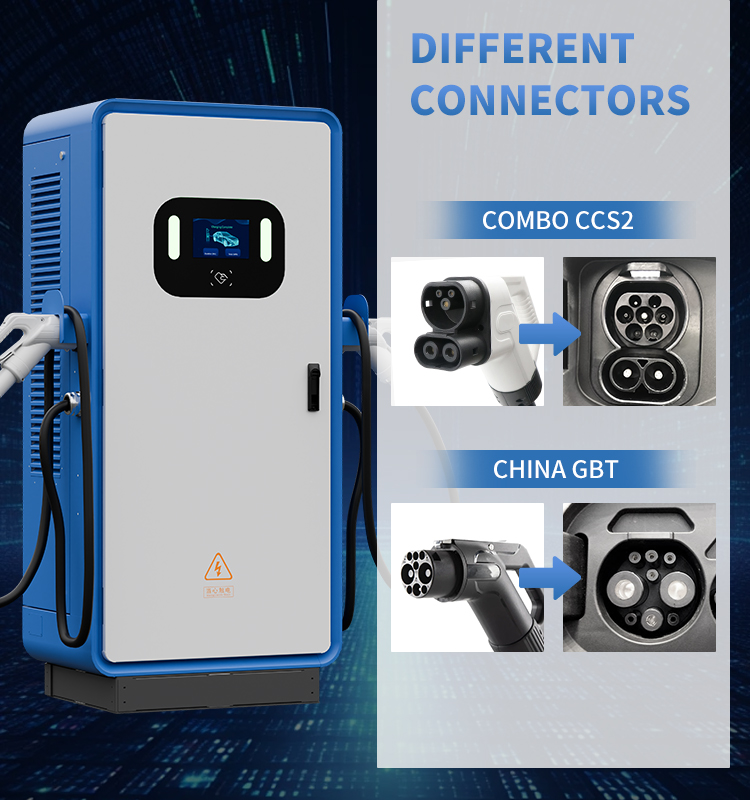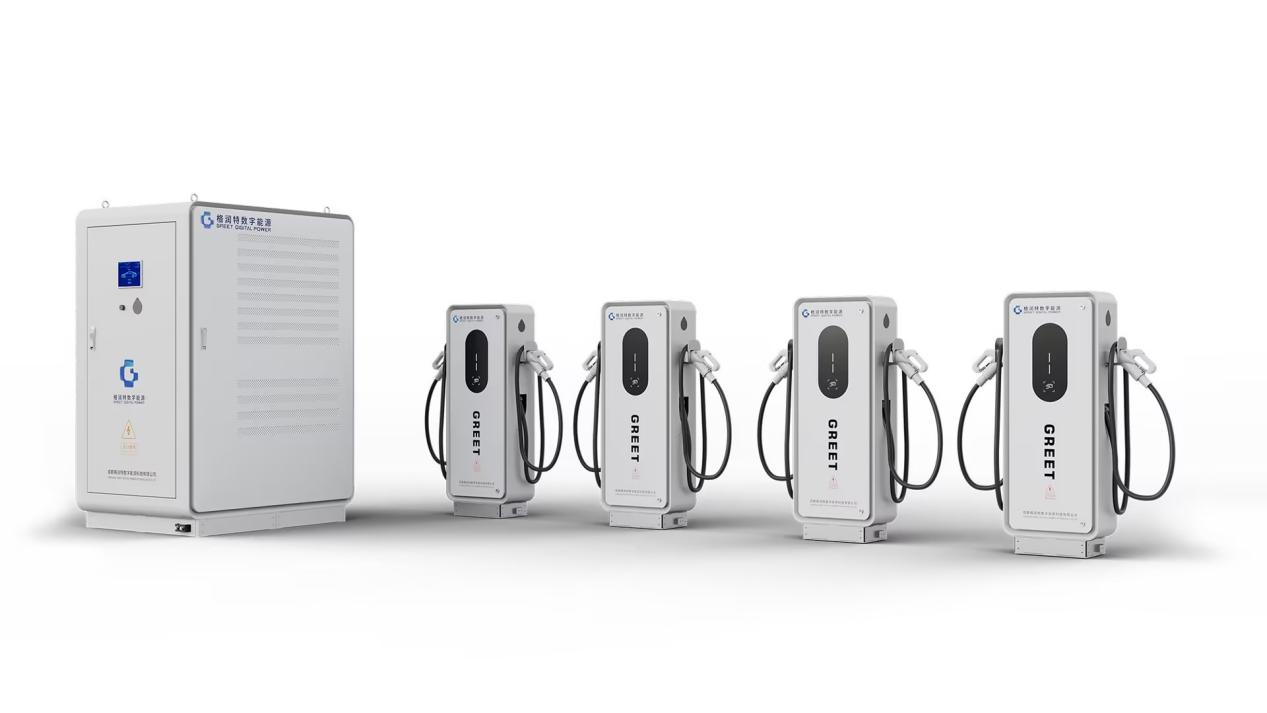As the electric vehicle (EV) market expands globally, the need for standardized and efficient charging infrastructure becomes increasingly critical. Different regions have adopted various standards to cater to their specific power demands, regulatory environments, and technological capabilities. This article provides a comprehensive analysis of the primary EV charging standards across the United States, Europe, China, Japan, and Tesla's proprietary system, detailing the standard voltage and current requirements, the implications for charging stations, and effective strategies for infrastructure development.
United States: SAE J1772 and CCS
In the United States, the most commonly used EV charging standards are the SAE J1772 for AC charging and the Combined Charging System (CCS) for both AC and DC charging. The SAE J1772 standard, also known as the J plug, is widely used for Level 1 and Level 2 AC charging. Level 1 charging operates at 120 volts (V) and up to 16 amperes (A), providing a power output of up to 1.92 kilowatts (kW). Level 2 charging operates at 240V and up to 80A, offering a power output of up to 19.2 kW.
The CCS standard supports higher power DC fast charging, with typical DC chargers in the U.S. delivering between 50 kW and 350 kW at 200 to 1000 volts and up to 500A. This standard enables rapid charging, making it suitable for long-distance travel and commercial applications.
Infrastructure Requirements:
Installation Costs: AC chargers (Level 1 and Level 2) are relatively inexpensive to install and can be integrated into residential and commercial properties with existing electrical systems.
Power Availability: DC fast chargers require substantial electrical infrastructure upgrades, including high-capacity electrical connections and robust cooling systems to manage heat dissipation.
Regulatory Compliance: Adherence to local building codes and safety standards is crucial for the safe deployment of charging stations.
Europe: Type 2 and CCS
Europe predominantly uses the Type 2 connector, also known as the Mennekes connector, for AC charging and the CCS for DC charging. The Type 2 connector is designed for single-phase and three-phase AC charging. Single-phase charging operates at 230V and up to 32A, providing up to 7.4 kW. Three-phase charging can deliver up to 43 kW at 400V and 63A.
The CCS in Europe, known as CCS2, supports both AC and DC charging. DC fast chargers in Europe typically range from 50 kW to 350 kW, operating at voltages between 200V and 1000V and currents up to 500A.
Infrastructure Requirements:
Installation Costs: Type 2 chargers are relatively straightforward to install and are compatible with most residential and commercial electrical systems.
Power Availability: The high power demands of DC fast chargers necessitate significant infrastructure investments, including dedicated high-voltage lines and advanced thermal management systems.
Regulatory Compliance: Compliance with the EU’s stringent safety and interoperability standards ensures the widespread adoption and reliability of EV charging stations.

China: GB/T Standard
China uses the GB/T standard for both AC and DC charging. The GB/T 20234.2 standard is used for AC charging, with single-phase charging operating at 220V and up to 32A, delivering up to 7.04 kW. Three-phase charging operates at 380V and up to 63A, providing up to 43.8 kW.
For DC fast charging, the GB/T 20234.3 standard supports power levels from 30 kW to 360 kW, with operating voltages ranging from 200V to 1000V and currents up to 400A.
Infrastructure Requirements:
Installation Costs: AC chargers based on the GB/T standard are cost-effective and can be integrated into residential, commercial, and public spaces with existing electrical infrastructure.
Power Availability: DC fast chargers require significant electrical infrastructure enhancements, including high-capacity connections and effective cooling systems to manage the heat generated during high-power charging.
Regulatory Compliance: Ensuring compliance with China’s national standards and safety regulations is essential for the safe and efficient deployment of EV charging stations.
Japan: CHAdeMO Standard
Japan primarily uses the CHAdeMO standard for DC fast charging. CHAdeMO supports power outputs from 50 kW to 400 kW, with operating voltages between 200V and 1000V and currents up to 400A. For AC charging, Japan uses the Type 1 (J1772) connector, operating at 100V or 200V for single-phase charging, with power outputs up to 6 kW.
Infrastructure Requirements:
Installation Costs: AC chargers using the Type 1 connector are relatively easy and inexpensive to install in residential and commercial settings.
Power Availability: DC fast chargers based on the CHAdeMO standard require substantial electrical infrastructure investments, including dedicated high-voltage lines and sophisticated cooling systems.
Regulatory Compliance: Adherence to Japan’s rigorous safety and interoperability standards is critical for the reliable operation and maintenance of EV charging stations.
Tesla: Proprietary Supercharger Network
Tesla employs a proprietary charging standard for its Supercharger network, offering high-speed DC fast charging. Tesla Superchargers can deliver up to 250 kW, operating at 480V and up to 500A. Tesla vehicles in Europe are equipped with CCS2 connectors, allowing them to use CCS fast chargers.
Infrastructure Requirements:
Installation Costs: Tesla’s Superchargers involve significant infrastructure investments, including high-capacity electrical connections and advanced cooling systems to handle high power outputs.
Power Availability: The high power demands of Superchargers require dedicated electrical infrastructure upgrades, often necessitating collaboration with utility companies.
Regulatory Compliance: Ensuring compliance with regional safety standards and regulations is essential for the reliable and safe operation of Tesla’s Supercharger network.
Effective Strategies for Charging Station Development
Strategic Location Planning:
Urban Areas: Focus on installing AC chargers in residential, commercial, and public parking areas to provide convenient, slow charging options for daily use.
Highways and Long-Distance Routes: Deploy DC fast chargers at regular intervals along major highways and long-distance routes to facilitate rapid charging for travelers.
Commercial Hubs: Install high-power DC fast chargers at commercial hubs, logistics centers, and fleet depots to support commercial EV operations.

Public-Private Partnerships:
Collaborate with local governments, utility companies, and private enterprises to fund and deploy charging infrastructure.
Incentivize businesses and property owners to install EV chargers by offering tax credits, grants, and subsidies.
Standardization and Interoperability:
Promote the adoption of universal charging standards to ensure interoperability between different EV models and charging networks.
Implement open communication protocols to allow seamless integration of various charging networks, enabling users to access multiple charging providers with a single account.
Grid Integration and Energy Management:
Integrate charging stations with smart grid technologies to manage energy demand and supply efficiently.
Implement energy storage solutions, such as batteries or vehicle-to-grid (V2G) systems, to balance peak demand and enhance grid stability.
User Experience and Accessibility:
Ensure that charging stations are user-friendly, with clear instructions and accessible payment options.
Provide real-time information on charger availability and status through mobile apps and navigation systems.
Regular Maintenance and Upgrades:
Establish maintenance protocols to ensure the reliability and safety of charging infrastructure.
Plan for regular upgrades to support higher power outputs and new technological advancements.
In conclusion, the diverse charging standards across different regions highlight the need for a tailored approach to EV infrastructure development. By understanding and addressing the unique requirements of each standard, stakeholders can effectively build a comprehensive and reliable charging network that supports the global transition to electric mobility.
Contact Us:
For personalized consultation and inquiries about our charging solutions, please contact Lesley:
Email: sale03@cngreenscience.com
Phone: 0086 19158819659 (Wechat and Whatsapp)
Sichuan Green Science & Technology Ltd., Co.
www.cngreenscience.com
Post time: May-25-2024




